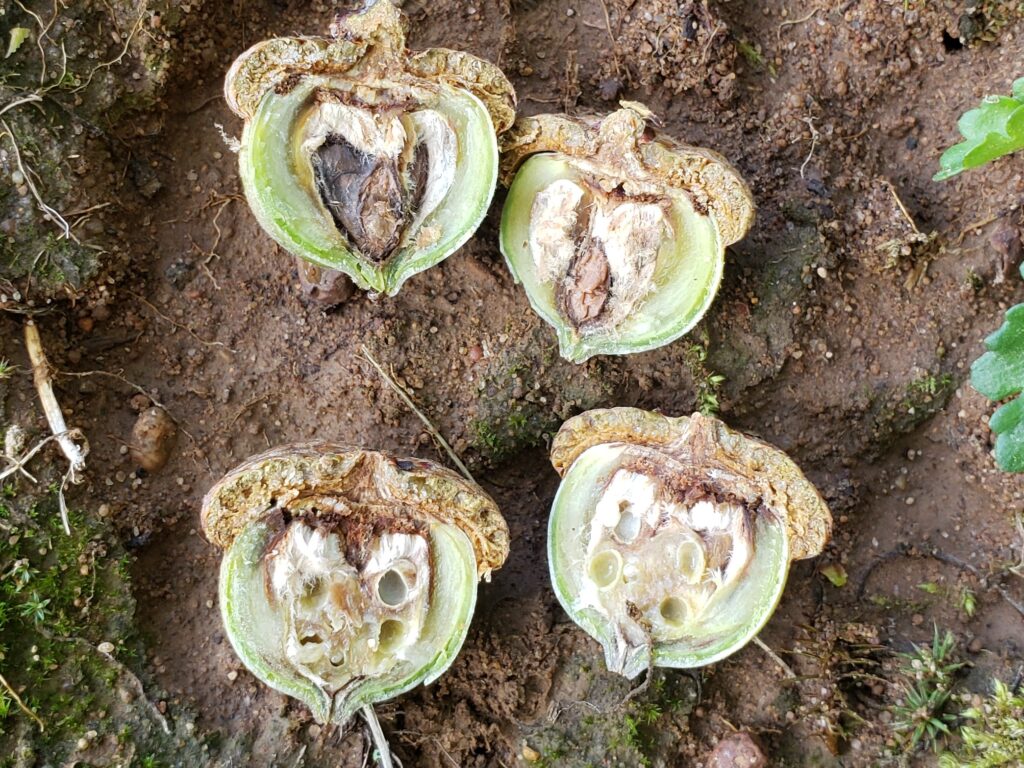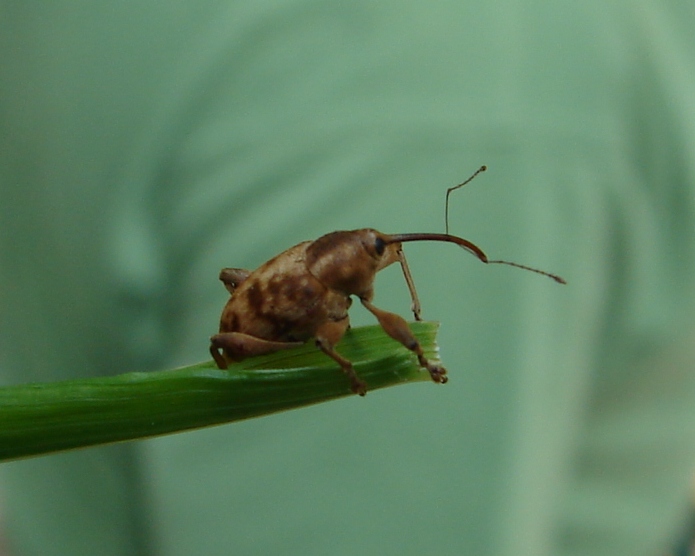Article By: Linda Williams, DNR Forest Health Specialist, Woodruff
Linda.Williams@wisconsin.gov or 920-360-0665
Have you seen small round holes in acorns? These holes are a sign of acorn weevil damage that can occur in all Wisconsin oak species.
Adult acorn weevils chew a small hole in the acorn while it’s still attached to the tree. They then lay an egg in the hole and plug it to camouflage their work.
After the eggs hatch, the larvae begin feeding on the inside of the acorn, which can make the acorn non-viable. When the acorn falls to the ground, the weevil larvae chew their way out, creating a perfectly round hole, and then burrow into the soil to spend the winter underground.

Acorns cut open to show significant damage inside by acorn weevil larvae. Weevil damage inside the acorn can make it non-viable. / Photo Credit: Wisconsin DNR
There are other insects that also feed on or in acorns making them non-viable, including acorn moth larvae and acorn pip galls.
A float test can help separate good acorns from damaged ones. If an acorn floats, it is damaged and should be discarded.
DNR nursery staff collect and buy acorns annually and report that acorn weevil attacks are generally low this year with a few localized, heavy infestations found.
Nursery staff also report that the last two years have been poor for acorn crops. It’s speculated that the poor acorn crops have prevented a buildup of weevils, resulting in the low amount of damage this year. Although this year appears to be good for white oak and burr oak acorns, red oaks are still experiencing a low acorn crop in many areas.


